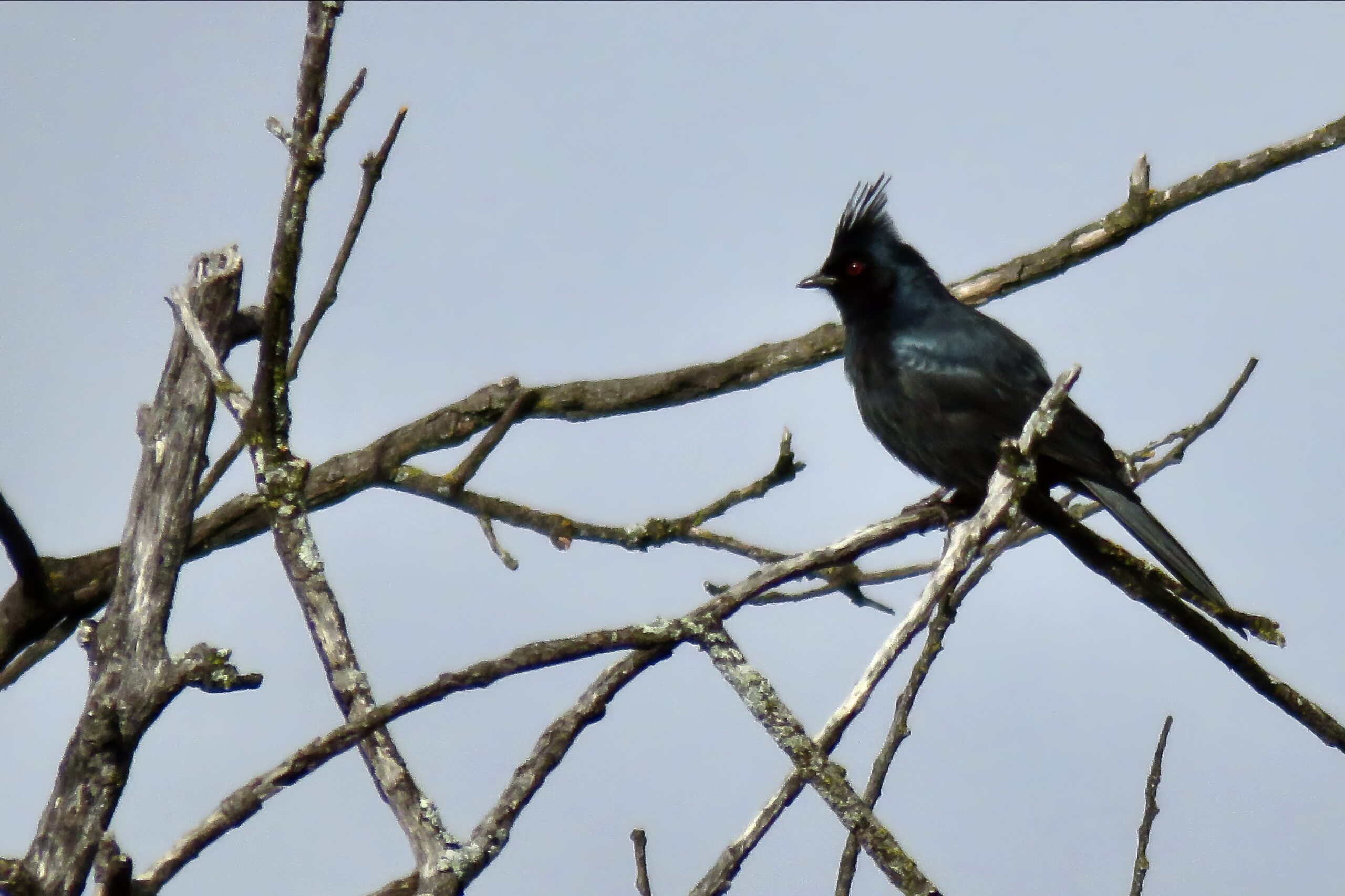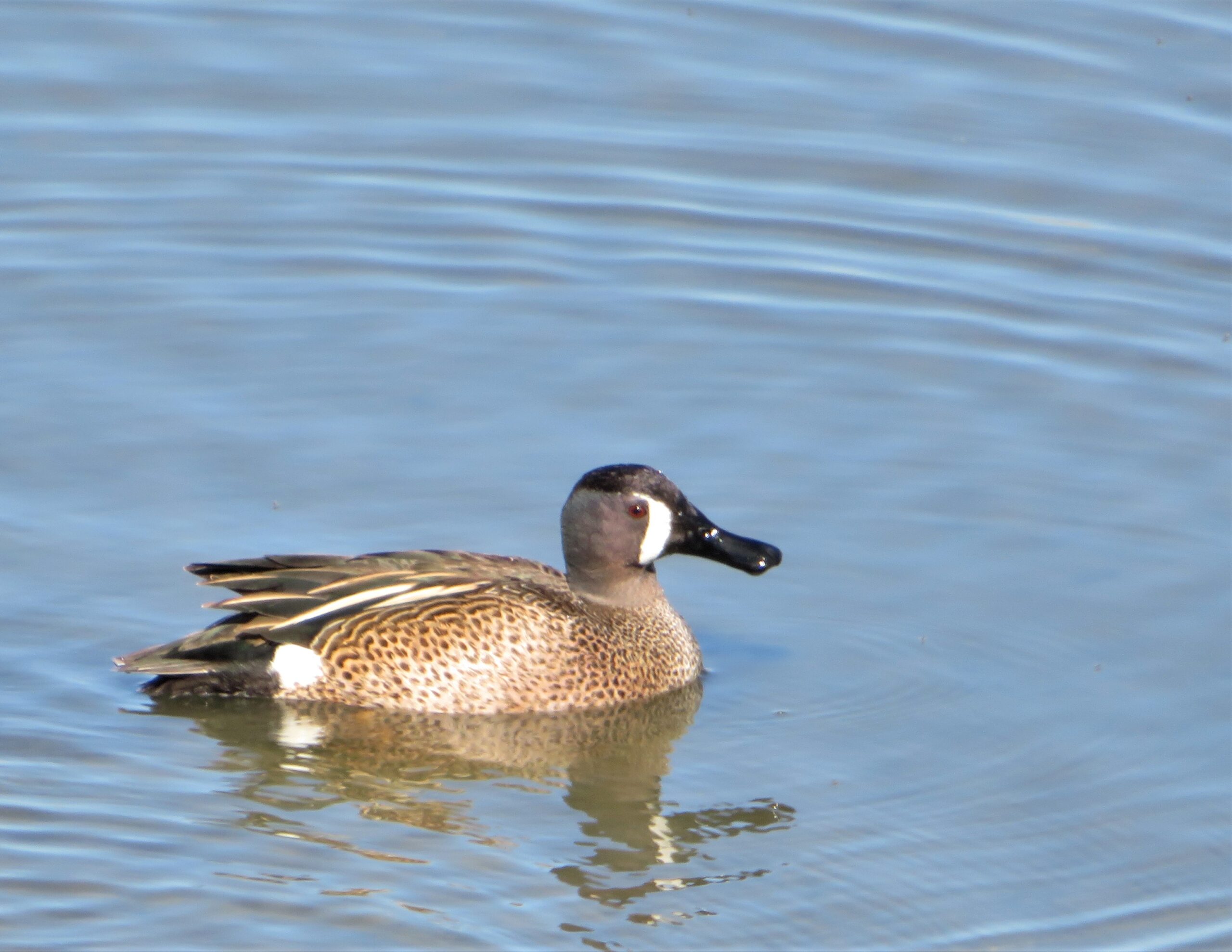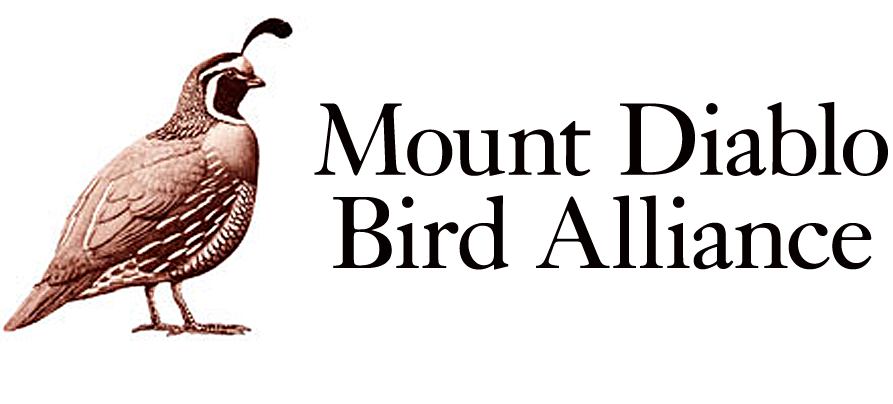Field Trips
 MDBA mounts dozens of Field Trips throughout the year, ranging from easy, accessible strolls around our local parks to longer expeditions to more distant sites, and including some vigorous hikes. On each field trip, one or more leaders guides our group to the best hotspots, in the best season… but the bird-spotting is really a team effort.
MDBA mounts dozens of Field Trips throughout the year, ranging from easy, accessible strolls around our local parks to longer expeditions to more distant sites, and including some vigorous hikes. On each field trip, one or more leaders guides our group to the best hotspots, in the best season… but the bird-spotting is really a team effort.
Come birding with us!
You can see the field trip checklists we’ve recorded since transitioning to electronic records here: https://ebird.org/profile/MzMzMDExMQ/world
To ensure that trips are not overcrowded, pre-registration through Eventbrite is required. MDBA members have priority, with member sign ups opening as soon as the trip is announced in our newsletter. Non-members are welcome too! Registration opens to the public a week before the trip. All registration closes 2 days before the trip, so leaders can know how many to expect. If you won’t be able to attend a trip that you’ve signed up for, please cancel via Eventbrite as early as possible to open that spot up for someone else.
Field trips are ranked according to difficulty:
Trail Rating 1: Easy. Little walking, under 1 mile, on smooth paths.
Trail Rating 2: Moderate. 1 mile or more, possibly some rough terrain.
Trail Rating 3: Challenging. Extensive walking and climbing on rough terrain!
Out of respect for our members and community, we ask participants to take sensible precautions for everyone’s health when carpooling and sharing spaces.
We always need new trip leaders! It’s fun, and a meaningful contribution to our chapter’s mission of education and outreach. Please contact our Field Trip Coordinator, Matt Tarlach, at . If you have a favorite birding spot you’d like to share with your fellow members but would like some help leading the trip, Matt can probably pair you up with an experienced trip leader.
If you’re looking for still more bird-related outings in our area, the East Bay Regional Park District holds a variety of events. Go to their Birding page here: https://www.ebparks.org/birding
..and click View Activities.
Self-guided Birding Hotspots
In addition to our scheduled MDBA Field Trips, you may want to go birding on your own. Thanks in large part to intense efforts put into conservation and restoration over the past several decades, we’re fortunate to have many productive spots in our area:
Heather Farm Park, Walnut Creek
A surprising number of species has been recorded at this humble suburban park, including California rarities. From the main entrance on Ygnacio Valley Road, drive or walk about a quarter mile into the park, past the little grove of redwoods, to the natural pond surrounded by reeds on the left. Though “improved” by humans over the years there’s been a pond here at least since the earliest surviving maps were drawn up under Spanish rule, and perhaps since the last Ice Age. The site continues to attract migrant birds, and many residents as well. The trail around the pond is accessible. West of the natural pond there’s a patch of oak savannah that hosts swallows, bluebirds, nuthatches, woodpeckers, and sometimes raptors.
https://ebird.org/hotspot/L373922
McNabney Marsh, Martinez
Named to honor MDBA advocate Al McNabney, who led the charge to restore this valuable wetland after an oil spill decades ago, the marsh hosts a variety of ducks and shorebirds along with grassland species in the surrounding hills. The marsh can be viewed either from the trailhead and overlook, accessible from Waterbird Way (use the Waterfront Rd exit from 680) or from the viewing deck near the entrance to Mountain View Sanitary District (use the Pacheco Blvd exit and turn right onto Arthur Rd). Especially good for waterbirds in winter.
https://ebird.org/hotspot/L417835
https://mtdiablobirds.org/conservation/ongoing-conservation-concerns/mcnabney-marsh/
Valle Vista Staging Area, south of Moraga
A day-use pass from EBMUD is required to hike here. A walk of a mile or so down the well-graded trail to the upper end of San Leandro Reservoir takes one through a variety of habitats, from brushland where we sometimes see California Thrashers and hear Wrentits through woodland, across a stream where you might hope to spot Wood Ducks, and then down to the reservoir where you might spot more interesting ducks…and eagles!
https://ebird.org/hotspot/L596210
More hotspots can be found just outside our chapter’s official “territory:”
Elsie Roemer Bird Sanctuary, Alameda
This Alameda site is really good for shorebirds, as well as gulls, waders, and others. The main viewing site is an accessible platform overlooking the mudflats and the Bay, off Shore Line Drive near the end of Broadway. (Please obey postings, and do not intrude on sensitive habitat areas.) Check a tide table before going to learn the best time to arrive – ideally about 1.5 hours before a high tide. Street parking is usually available in the area, but can be tight when Shore Line Drive is closed to parking for street cleaning.
https://www.ebparks.org/sites/default/files/ccvc_elsie_roemer_bird_sanctuary.pdf
Hayward Regional Shoreline
This is a very popular location for walkers, fishing persons, and birders. Parking at the Winton Avenue parking lot is best, at the first area before entering through the open gate. It’s about a half-mile walk out to the edge of San Francisco Bay along the flood control channel. Turning north along the bay, and passing the landfill on your right, brings one to a large mostly-dry mudflat known as “Frank’s Dump.” This spot can be heaven for shorebirds in late summer and fall, as they either gather for the winter or use the area as a stopping point during their southerly migration. Near high tide one might see Willets, Marbled Godwits, Red Knots, Short-billed Dowitchers, Ruddy Turnstones, Black-bellied Plovers, and the occasional Pacific Golden-Plover. Migrant passerines may be seen in the trees and weedy areas near the parking lot, and gulls, terns, and pelicans out over the bay. Raptors can be anywhere.
https://www.ebparks.org/parks/hayward
Other bayside locations to try include:
Coyote Hills Regional Park
San Leandro Marina
Martin Luther King Jr. Regional Shoreline – Arrowhead Marsh
Hawk Hill, Marin Headlands
In September and October the southward migration of raptors here can be quite spectacular. As birds fly south along the California coast they eventually arrive at the Golden Gate, the one-mile wide opening to our bay. Birds don’t like flying over the water and as a consequence, raptors congregate at what is now known as Hawk Hill northwest of the Golden Gate Bridge. They circle above the hills on the rising thermals to gain altitude before finally making the jump across the gap. Since raptors like to use the solar-heated air to ease their flight south, birding here is often best around mid-day. The Golden Gate Raptor Observatory conducts a count every fall of all the raptors, often reaching into the hundreds per day.
Parking can be tough, and is sometimes easier on a weekday. And watch out for Fleet Week, when the hills are packed with crowds watching the bigger, louder, jet-powered birds of the Navy’s air show!
https://www.parksconservancy.org/programs/golden-gate-raptor-observatory
*Note: Members who visit Hawk Hill in Marin to witness the fall raptor migration should be advised that the summit area may be closed to the public through the remainder of 2025, for construction. The long-running Hawkwatch is still taking place, but only official volunteers with that program are permitted access to the top of the hill. Our MDBA field trips to Hawk Hill will resume next year. More up-to-date info: https://www.nps.gov/goga/learn/nature/hawk-hill-visitor-improvement-project.htm
Abbotts Lagoon, Point Reyes National Seashore
Prime time for this hotspot on the northern Marin coast is the second half of October, but other times can be good. It requires driving toward Point Reyes, and turning onto Pierce Point Road. A 1-1/2 mile walk through the coastal habitat brings one to a bridge over the upper lagoon. Another 1/2 mile walk across sand and along the edge of the outer lagoon will bring one to the beach. A more rigorous 5,100 mile swim will take one to Japan. Birds we’ve seen here include sparrows, shorebirds, and raptors. The outer lagoon frequently has a good selection of shorebirds which will stay most of the winter. Snowy Plovers nest along the beach and south of the outer lagoon—they are often easy to find. American Pipit flocks need to be checked for possible Red-throated Pipits. In late October we’ve often seen a good selection of raptors including Red-tailed and Ferruginous Hawks, Northern Harriers, and White-tailed Kites. Check the Point Reyes National Seashore website for access updates.
https://www.nps.gov/places/point-reyes-abbotts-lagoon-trailhead.htm
Bodega Bay
Not only is Bodega Bay famous for its role in the Hitchcock movie The Birds, but it’s also famous for the many birds which can be found there. Starting in early fall and continuing through the winter, many shorebirds and waterfowl make Bodega Harbor their winter home. Any number of locations around the harbor can be visited for birding opportunities: the boardwalk behind the Tides Restaurant, Porto Bodega, the Rail Pond, Gaffney Point, Owl Canyon, Campbell Cove, and Bodega Head are all worth a stop and a long look.
https://www.audubon.org/important-bird-areas/bodega-harbor
Bird Walk Coastal Access Trail: https://parks.sonomacounty.ca.gov/visit/find-a-park/bird-walk-coastal-access-trail
East Contra Costa County Birding Spots
Jerry Britten, MDAS President
Clifton Court Forebay
This is one of the most productive birding hotspots in the entire county, with over 200 species recorded on eBird. This can easily be an all-day birding expedition. During the fall, winter, and spring, thousands of gulls, scaup, and coots along with myriad other waterfowl are present here. During the summer months uncommon birds and rarities such as Western Sandpiper, White-faced Ibis, and Bank Swallow can be found. Good numbers of raptors are always present, including resident Bald Eagles. Great-horned Owls are often seen. Otters and even Sea Lions can frequently be observed. The parking area is at the end of Clifton Court Road off of Highway J4 a few miles southeast of Byron. It’s an out-and-back trip, as the paved levee road goes 90% of the way around the reservoir, leaving an open stretch of water between you and your car. Going to the end of this road and back is an approximately 16-mile roundtrip, so it is best explored with a bicycle, electric scooter, or other mode of transportation. A 5–6-mile roundtrip takes you to out to Eucalyptus Island, where there are large rookeries of Double-crested Cormorants, egrets, and herons in-season. Out here are also good-quality dirt levee roads, connected to the paved road, that overlook very productive marshland, slough, and brush habitat along Italian Slough and Old River. The entire route is exposed with no shade, and can be windy at times.
https://en.wikipedia.org/wiki/Clifton_Court_Forebay
Round Valley Regional Park
This 2191-acre preserve contains non-native grassland, oak woodland/savannah, shrubland, and riparian woodland plant communities. The park entrance is off of Marsh Creek Road between Deer Valley Road and Camino Diablo intersections. The park has become very popular with local residents, so the large parking lot often fills up on weekends. According to eBird, 145 species have been recorded here. Typical woodland birds can be found, as well as grassland birds in the open valley that makes up a large fraction of the park. Sometimes, large flocks of Long-billed Curlews forage in the valley during the fall and winter. The best birding is at the back of the park, along its southwestern edge that abuts Morgan Territory Regional Preserve and Los Vaqueros Watershed land. This is about 3 miles from the trailhead, so a mountain-bike trip is a good way to explore it along the mostly-gently-sloping Miwok Trail. Back in this area Lewis’s Woodpeckers have been reliable for several years. As many as a dozen at one time have been recorded. There are a couple of stock tanks in this area, which are good for loitering near to watch several species of birds come to take a drink. The steep ridgeline at the park’s southwestern border was scorched, and, in some areas, burned to bare dirt by the August 2020 wildfires. It will be interesting to see how this impacts local birdlife during the next several years.
https://www.ebparks.org/parks/round_valley/
Creekside Park (including Creek Road), Brentwood
This is the birding hotspot for fall, winter, and spring rarities in East County. Several species are regularly seen here that are uncommon but findable farther west, but very scarce in East County. Such birds include Golden-crowned Kinglets, Red-breasted Nuthatches, and Chestnut-backed Chickadees. Often, scarce winter warblers such as Townsend’s, Black-throated Gray, and Orange-crowned are recorded. Over-wintering Western Tanagers as well as vagrant Hammond’s Flycatchers, Red-naped Sapsuckers, and Scaly-breasted Munias have also been seen. The southern terminus of the Marsh Creek Regional Trail begins at the trailhead at the intersection of Concord Ave. and Creek Road in south Brentwood. A walk north from the trailhead up Creek Road along the riparian corridor of Marsh Creek is quite productive. Less than ½ mile north of the trailhead, looking through a fence onto a golf-course pond can provide views of several waterfowl species. A few yards north from here, there is usually water in the creek that many birds come to for bathing and drinking. Continue along Creek Road, looking over the field to the left for raptors and other fly-bys. Following this is a section of the road with a lot of toyon and other berry-bearing shrubs where Purple Finches, Cedar Waxwings, Hermit Thrushes, and other frugivorous birds can be found. Past this, continue along Marsh Creek Trail over the pedestrian bridge spanning the canal, and enter Creekside Park. This park, especially the riparian habitat along the eastern edge, continues to be productive. Continue along this edge of the park to its end at Crescent Drive. In the fall and winter of 2020-2021, many observers saw the vagrant Plumbeous Vireo along this section. This is about a 3 mile, flat, out-and-back roundtrip, and is the southern end of the Marsh Creek Regional Trail System that extends another 8-10 miles all the way to Big Break Regional Shoreline in Oakley.
https://www.ebparks.org/parks/trails/marsh_creek/default.htm
-
-

MDBA Field Trip — Putah Creek
Putah Creek Road 3836 Putah Creek Rd, Winters, CA, United StatesThis is a great chance to see a variety of birds and ducks along Putah Creek and Lake Solano. Possible species include Osprey, Lewis's Woodpecker, Phainopepla, Barrow's Goldeneye and Hooded […]
$8 -

MDBA Field Trip — Bridgeway Island Pond, West Sacramento
McDonald's West Sacramento 2244 Lake Washington Blvd., West Sacramento, CABridgeway Island Pond in West Sacramento is a low-key birding hotspot, offering fairly close views of an assortment of waterfowl and shorebirds. In past years it's been a great spot […]
Free
